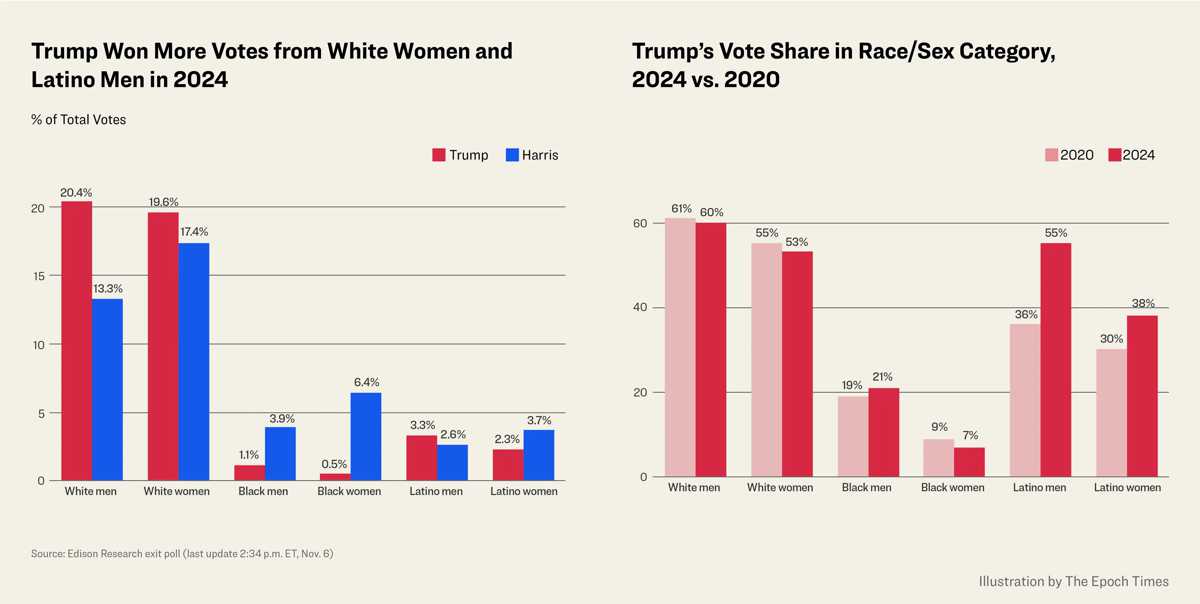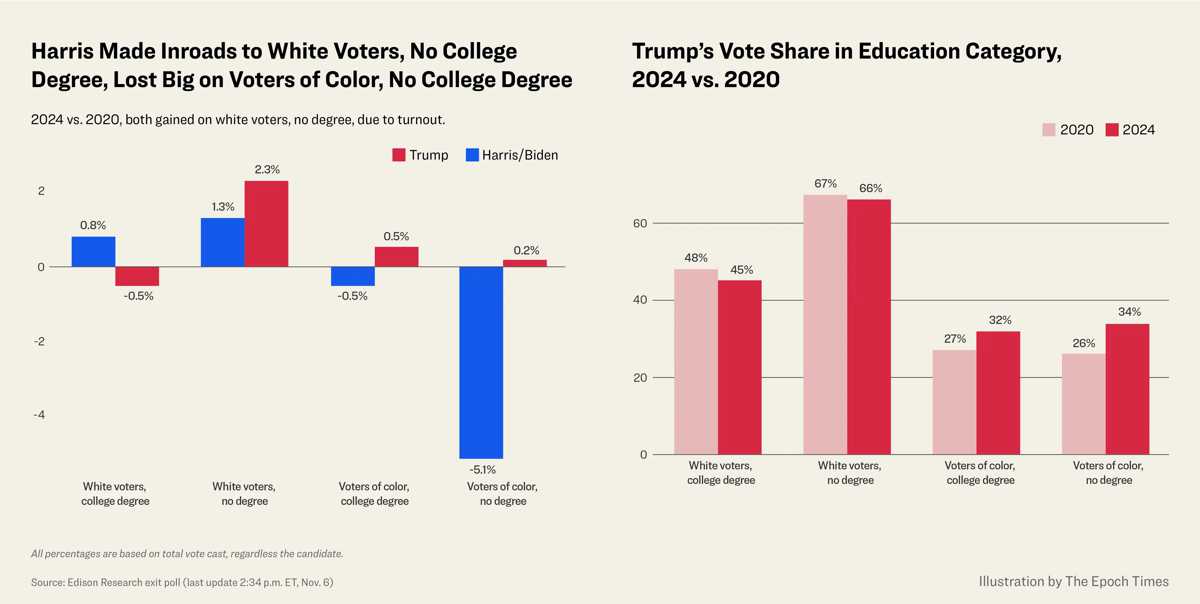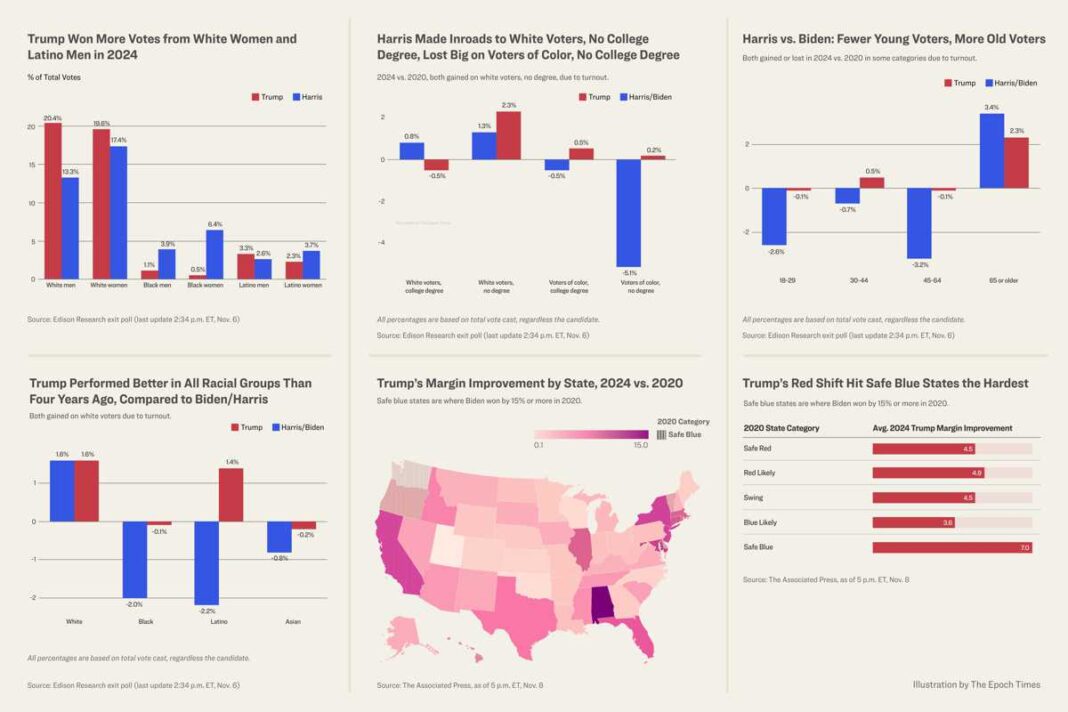Exit polling by Edison showed that Americans were more similar in their voting patterns this cycle than they were divided.
President-elect Donald Trump’s victory in the 2024 presidential election was the result of demographic shifts that benefited Republicans.
Exit polling by Edison showed that Americans were more similar in their voting patterns this cycle than they were divided—the expected wide gaps based on gender, education, age, and race between Republicans and Democrats failed to materialize.
Trump ultimately was able to narrow these gaps vastly compared to 2020, concentrating on economic messaging that was compelling to a broad cross section of American political society.
Currently, the president-elect is projected to have carried all seven of the core swing states, bringing him up to a total of 312 electoral votes to Vice President Kamala Harris’s 226.
These charts show the shifts that gave Trump a second, nonconsecutive term in the White House.
Gender
This campaign season was unusually gendered in each campaign’s strategy.
Harris sought to target female voters, using the issue of abortion as a rallying point. Trump focused more on male voters, particularly young men, and appeared on podcasts popular with the demographic.
Thus, observers expected a substantial gender divergence that, ultimately, didn’t materialize.
In reality, Trump outperformed among both men and women, winning white men, white women, and Hispanic men outright and increasing his share among black men and Hispanics.

Education
Democrats have gained ground among wealthy, white, college-educated voters in recent years, and those trends continued in 2024.
This cycle, Harris gained among white college-educated voters, winning 17.2 percent of total votes cast for the presidential election from the group. President Joe Biden received 16.3 percent of his votes from the group in 2020, a 0.8 point shift. That’s unsurprising, as Harris targeted these voters.
Trump has also made gains for the GOP among non-college educated voters across racial groups.
Technically, Trump also lost a point of support from white non-college educated voters compared to 2020, though that’s within the exit poll’s margin of error.
But where he lost some among white voters, he gained among minority voters, including both those with and without college degrees.

Age
Traditionally, young people tend toward Democrats and older people veer more Republican.
By Joseph Lord, Terri Wu







